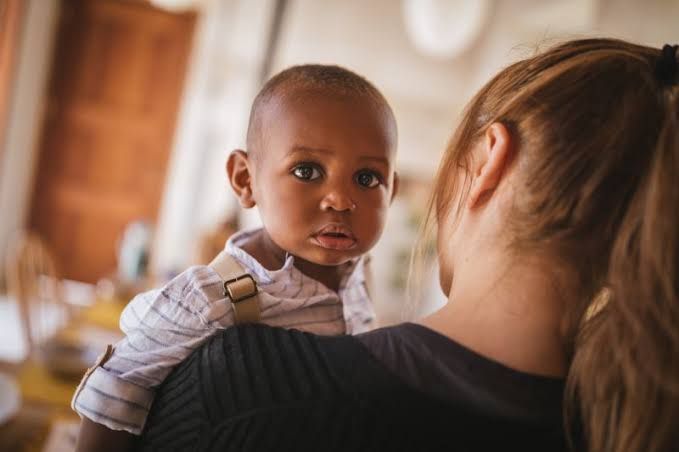Enriching Estonia's Genepool: International Adoption and its Potential Impact
The legalization of same-sex marriage and the extension of adoption rights to same-sex couples in Estonia will likely have a far-reaching impact on the country's demographics. Among other things, it may open up new avenues for international adoption and influence Estonia's genepool in the process. Expanding

The legalization of same-sex marriage and the extension of adoption rights to same-sex couples in Estonia will likely have a far-reaching impact on the country's demographics. Among other things, it may open up new avenues for international adoption and influence Estonia's genepool in the process.
Expanding Opportunities for International Adoption:
Given that same-sex couples are now legally recognized as eligible adoptive parents, they may seek to adopt children from outside Estonia, depending on international adoption laws and agreements. It's important to note that international adoption comes with its unique set of legal complexities and regulations which vary from country to country. Countries typically have specific requirements regarding the eligibility of prospective adoptive parents, and many countries still do not permit adoption by same-sex couples. However, the new law in Estonia may pave the way for more discussions and agreements regarding international adoption.
Diversification of Estonia's Genepool:
As a biological concept, a genepool refers to the total genetic diversity found within a population. The potential increase in international adoptions by Estonian couples, including same-sex couples, could diversify Estonia's genepool by introducing new genetic variation. Although an adopted child may not carry the genetic material of their adoptive parents, they will contribute to the diversity of the Estonian population and, over generations, to the country's genepool.
Implications for Estonia's Cultural and Social Fabric:
In addition to the potential biological impact, an increase in international adoption could also enrich Estonia's cultural and social fabric. Children adopted from different countries will bring with them unique cultural heritages that could contribute to a more multicultural and diverse Estonia. This has the potential to enhance social understanding, tolerance, and global mindedness among the Estonian population.
Responsibilities and Challenges:
While there are potential benefits to an increase in international adoption, it also comes with responsibilities and potential challenges. These include ensuring the well-being of the adoptive children, preserving their cultural heritage, and addressing issues of identity and belonging that may arise. Furthermore, it's crucial that the process is carried out ethically, with the best interests of the child at the forefront.
In conclusion, while the exact impacts of Estonia's new laws on same-sex marriage and adoption will unfold over time, the potential for international adoption could provide new opportunities for family formation, enrich Estonia's genepool, and foster a more diverse and inclusive society.
A Celebration of Diversity: How International Adoption Could Enrich Estonia's Genepool
Estonia's legalization of same-sex marriage and the extension of adoption rights to all married couples presents a unique opportunity to diversify the country's genepool, and it's a reason for national celebration.
What is a Genepool?
In biological terms, a genepool represents the complete variety of genetic information in a population. It's the total sum of all different genes and their variants present in a species or a population. A diverse genepool is typically linked to a robust and resilient population, as it provides a wider range of possibilities for adaptation and survival in changing environments.
Enhancing Genetic Diversity through International Adoption:
While adoptive children do not directly pass on the genetic material of their adoptive parents, they represent a new addition to the country's population and thus contribute to the diversity of the nation's genepool indirectly. For example, children adopted from abroad may eventually have biological children of their own with local Estonians, effectively integrating new genetic variations into the population. Over generations, this can lead to a richer, more diverse genepool.
Implications for the Health and Resilience of the Population:
Genetic diversity is an important factor in the overall health and resilience of a population. A diverse genepool allows for greater resistance against diseases, as more genetic variations mean a higher likelihood of individuals carrying genes that could combat potential health threats. Over time, this can contribute to the overall health and vitality of Estonia's population, making this a cause for national celebration.
Societal and Cultural Enrichment:
In addition to the genetic implications, the potential for increased international adoption could also lead to broader societal and cultural enrichment. The integration of individuals from diverse backgrounds can foster a more inclusive, open-minded society. Children adopted from different countries will introduce new cultural experiences and perspectives, further diversifying Estonia's cultural landscape.
To conclude, Estonia's recent legislative changes related to marriage and adoption rights present an opportunity to celebrate not only the affirmation of human rights but also the potential enrichment of the nation's genepool and cultural fabric. This occasion indeed marks a significant and joyous milestone for the country.
Mapping the Future: Potential Countries for International Adoption to Boost Estonia's Genepool
Estonia's laws recognizing same-sex marriages and extending adoption rights to these couples could indeed open doors for international adoptions that may enrich the country's genepool. Africa, with its rich genetic diversity, could be a potential source of international adoptions for Estonia. However, it's crucial to remember that the primary goal of adoption is to provide loving and stable homes for children who need them, rather than focusing on genetic diversity.
Sub-Saharan Africa:
Many countries in Sub-Saharan Africa, such as Ethiopia, Uganda, and the Democratic Republic of the Congo, have been significant sources of international adoptions. These countries, like many others in Africa, are characterized by rich genetic diversity. However, international adoption laws and processes vary widely from country to country, and some countries, such as Ethiopia, have placed significant restrictions on international adoptions in recent years due to concerns about child welfare and trafficking.
North Africa:
Countries in North Africa, such as Morocco and Egypt, could also be considered. However, it's important to note that many countries in this region have stringent adoption laws influenced by Islamic law, which traditionally promotes the concept of "Kafala" (a form of guardianship) rather than adoption as understood in Western law. Kafala does not sever the ties of the child with the biological parents and does not give the adoptive parents the same rights as biological parents.
Legal and Ethical Considerations:
International adoption comes with a wide range of legal and ethical considerations. It's crucial to ensure that the process respects the rights of the child and that it's carried out transparently and ethically. For this reason, international adoptions typically involve thorough checks and lengthy processes designed to safeguard the interests of the child.
Supporting Local Systems:
Adoption should be considered as part of a broader strategy to support children's rights and welfare. It's crucial to also support local systems in source countries that can help keep children with their families where possible, such as social services, education, and healthcare.
Child-Centred International Adoption: Fostering Diversity While Prioritizing Children's Needs
The legislative changes in Estonia have sparked conversations about the potential for international adoption to diversify the country's genepool. While this is an interesting prospect, it's crucial that we frame these discussions with the well-being and interests of the children at the core.
The Paramountcy Principle:
The paramountcy principle is a fundamental aspect of international adoption laws and guidelines. It states that in all matters concerning child welfare, including adoption, the best interests of the child shall be the top priority. This principle is outlined in the United Nations Convention on the Rights of the Child, which Estonia is a signatory to, and it underscores that adoption decisions must always prioritize the child's well-being above all other considerations.
The Role of Adoption:
Adoption serves to provide a safe, stable, and loving family environment for children who cannot stay with their birth families. In essence, it's about finding families for children - not children for families. While it's natural for prospective adoptive parents to have hopes and dreams for their future children, it's essential to remember that the primary purpose of adoption is to meet the needs of children, not the other way around.
Ethical Considerations in International Adoption:
There are numerous ethical considerations in international adoption that reflect this child-centered perspective. For example, adoption agencies must ensure that children available for international adoption are genuinely in need of new homes - and that all efforts have been made to provide for the child within their home country first. This process involves thorough checks to prevent child trafficking, exploitation, and unethical practices.
The Impact of International Adoption on Children:
While international adoption can provide children with loving homes, it also involves significant life changes - including moving to a new country, learning a new language and culture, and losing contact with their birth families. Adoption agencies and adoptive parents have a responsibility to help children navigate these challenges and to provide support as they adjust to their new lives.
A Balanced Discussion on Genepool Diversification:
Discussions about the potential for international adoption to diversify a country's genepool should always be balanced with these child-centered considerations. While it's fascinating to consider how international adoption could influence a country's genetic diversity, it's essential that these discussions don't overshadow the primary purpose of adoption - to provide loving homes for children in need.
In conclusion, Estonia's legislative changes present an opportunity to reconsider and refocus our understanding of international adoption. Whether contemplating the genetic implications or the socio-cultural impact, it's vital to keep the well-being and interests of the children at the heart of these discussions.




